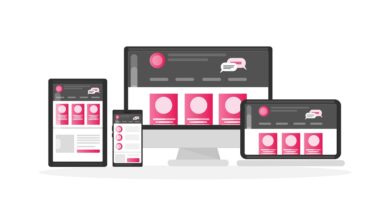The Power of User-Centered Design in Mobile App Development
Introduction
Mobile applications have grown to be an essential part of our daily lives in today’s world. Whether it’s booking a taxi, ordering food, or managing finances, mobile apps are convenient and easy to use. But what makes a mobile app successful? The answer is simple – user-centered design. In this article, we will explore the power of user-centered design in mobile app development.
However, developing a successful mobile app is not a simple task. It requires a deep understanding of the users’ needs and preferences, as well as technical expertise in designing and building the app. Here is where mobile app development involves.
Mobile app development services offer businesses and organizations the expertise and resources needed to create a successful mobile app. By working with a team of experienced developers, businesses can ensure that their app is designed with the users in mind and meets their needs in a meaningful and efficient way.
In this article, we will explore the power of user-centered design in mobile app development. We will discuss the steps involved in the design process and the benefits of using a user-centered design approach. We will also examine the importance of mobile app development services and how they can help businesses and organizations to create successful mobile apps that meet the needs of their users.
I. What is User-Centered Design?
User-Centered Design (UCD) is an approach that places the needs and preferences of the user at the forefront of the design process. It involves understanding the users’ goals, behaviors, and motivations, and creating an app that meets their needs in a meaningful and efficient way.
II. Why is User-Centered Design Important in Mobile App Development?
Mobile app development is a complex process that involves a team of developers, designers, and testers. While it’s important to have a technically sound and visually appealing app, it’s equally important to create an app that is user-friendly and intuitive. The user-centered design ensures that the app is designed with the end user in mind, leading to a better user experience and higher user satisfaction.
III. Steps in User-Centered Design
The user-centered design process involves four main steps: research and analysis, conceptualization and ideation, prototyping, and testing and iteration.
A. Research and Analysis
The first step in the UCD process is to research and analyze the users and their needs. This involves conducting user surveys, interviews, and focus groups to understand the users’ goals, behaviors, and preferences. This information is used to create user personas and scenarios, which provide a detailed description of the user’s needs and motivations.
B. Conceptualization and Ideation
In this step, the design team uses the information gathered in the research phase to create a conceptual design for the app. This involves brainstorming ideas and creating wireframes, which are visual representations of the app’s layout and functionality. The wireframes are then tested with users to get feedback and make improvements.
C. Prototyping
The next thing to do is to create an app prototype. This involves creating a working model of the app with basic functionality. The prototype is then tested with users to identify any usability issues or design flaws.
D. Testing and Iteration
Once the prototype is complete, it’s time to test the app with a larger group of users. This helps to identify any remaining issues and make further improvements. The testing and iteration process continues until the app is ready for launch.
Also: User-centered design is a powerful approach to mobile app development that prioritizes the needs, preferences, and behaviors of the end-users. When its performed with cross platform app development, this approach can lead to highly successful mobile apps that can reach a wider audience across different platforms such as iOS and Android. This approach can also result in cost savings and faster time-to-market, as the development process is streamlined and simplified.
IV. Benefits of User-Centered Design in Mobile App Development
There are many benefits of using a user-centered design approach in mobile app development. These include:
- Improved User Experience – User-centered design ensures that the app is designed with the user in mind, leading to a better user experience and higher user satisfaction.
- Higher Adoption Rates – When users have a positive experience with an app, they are more likely to recommend it to others and continue using it.
- Increased Efficiency – A well-designed app that meets the users’ needs can help to streamline processes and increase efficiency, leading to higher productivity and cost savings.
- Reduced Development Costs – By involving users in the design process early on, design flaws and usability issues can be identified and addressed before the app goes into development, saving time and money.
Complete Guide on Mobile app stack Technology
Conclusion
As technology advances and the market for mobile apps continues to grow, the competition becomes more intense. Creating an app that is user-friendly and intuitive can set it apart from the competition and lead to its success. By using a user-centered design approach, developers can create apps that are not only technically sound but also meet the users’ needs in a meaningful and efficient way.
In today’s fast-paced world, users want apps that are easy to use and provide value. A user-centered design approach can help to create apps that meet these requirements and provide a better user experience. This, in turn, can lead to increased adoption rates and better user engagement, which is essential for the success of any mobile app.
lastly, user-centered design is a critical component of mobile app development that can help to create apps that are user-friendly, efficient, and intuitive. By involving users in the design process, developers can create apps that meet the users’ needs and preferences, leading to a better user experience and higher user satisfaction. In today’s competitive market, a well-designed app that meets the users’ needs can make all the difference in the success of an app.




